June in the Natural Garden
- Posted in: Blog, Monthly Garden Advice
- Tags Garden Maintenance, Seasonal Gardening, Words by Mike Evans
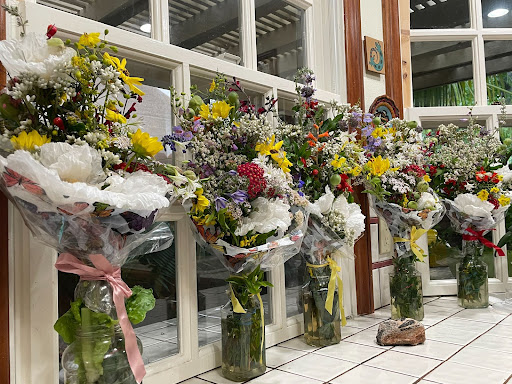
June in the Natural Garden
June marks the beginning of summer with long days that are usually not extremely hot (at least near the coast), allowing opportunities for outdoor adventures. Your natural garden should be just fine in your absence, perhaps it’s at a stage having become “self-sustaining,” so you can go play in nature.
Current events, history, review, and notes
Warm and dry with no chance of rain… the forecast we’ll do well to get used to. Occasional days with low clouds burning off around noon. Some days, sunny, with temps above normal. Hot inland. Extreme heat in the deserts. This year we have a severe water shortage and strict conservation measures are in effect.
Watering
Again, still, one more time, to repeat, to be clear… We did not get enough rain last season to provide deep moisture (8-16” deep) in the soil, which is what plants need to be happy through summer. Hopefully you’ve been charging the soil with moisture with once-a-month Deep Soaks, supplementing our scant rains and putting the equivalent of approximately 1” of precipitation on the entire garden with each Deep Soak. For most gardens, you can continue this watering regime, but in the name of conservation on established natural gardens, you can probably get by with a total of two to four Deep Soaks between now and November, 5-7 weeks apart.
Assuming you have established consistent deep moisture in the root zone, you lock it in with periodic Deep Soaks. Now add those valuable Refreshing Sprinkles, where you spray down the leaves and soil surface for 5 minutes or so, cooling everything off. Do Refreshing Sprinkles in the late afternoon/early evening, two or more times a week. Do Deep Soaks in the early morning about once a month. More details here, in case you are not yet familiar with these terms:

Established fremontia needing no supplemental water in summer.
Related to Watering
As the sun’s arc steadily changes to nearly directly overhead, soil temps are on the rise. Summer root diseases on native plants can be prevented altogether, but when you see signs of them, it’s almost always too late, because the plant’s demise is usually swift and unexpected.
On woody shrubs such as ceanothus, manzanita, coffeeberry and fremontia, individual branches that flag dead seemingly overnight are infected with a fungal (sometimes bacterial) disease. Break the branch off, or cut it off by making your cut well into healthy tissue, discard the branch and sanitize the shears in 10% bleach solution, alcohol, or Lysol spray. If the disease is not coming from the root, the problem is solved.
If additional branches flag dead or the whole plant withers and shrivels brown, it’s too late for treatment, root rot has set in and the plant may be on its way out.
To prevent root rot and branch dieback, or to try to save a symptomatic plant as a last ditch effort, you should know the root (no pun intended) causes:
- Soil that stays saturated for long periods at the surface 1-6” deep. This is where root rot thrives, in warm moist soil. Our goal is to promote rooting into deep cool moist soil, 10-18” deep.
- Thick layers of inferior organic mulch which stay too wet, heat up during composting, release toxic gasses, harbor disease, and smother the soil surface taking away the soil’s ability to “breathe.”
- Frequent irrigations that cause Number 1 above.
- Spray head or drip emitter too close to the plant’s collar or crown (where the stem comes out of the ground) causing rot at a part of the plant that needs to be high and dry in summer.
- Plant is too deep in the basin. Do not allow water to collect for long periods around the collar. If the plant has sunk too deep into the soil, dig around, establish the proper level, and provide an exit for irrigation water so that it does not puddle around the collar.
- Lack of oxygen, especially in heavy clay soils. In healthy soils, moisture clings to the soil particles (by osmosis) and air occupies the pore spaces. When we irrigate, water temporarily fills the pore spaces. The goal is to allow air to follow the water down into the soil, and occupy the pore spaces between waterings. If waterings are too frequent, the plant sort of “drowns” for lack of oxygen. Heavy clay soils need Deep Soaks less frequently than light porous sandy soils. If the plant is deprived of oxygen because of excess water, especially in warm soil, just one mistimed or prolonged irrigation can be enough to make conditions right for root rot to set in.
- Most native shrubs are not adapted to receiving rainfall in the hot season. If your sprinklers are consistently hitting the branches, they may be susceptible to air-borne disease. This is why we irrigate thoroughly and infrequently with Deep Soaks in the early morning and do our Refreshing Sprinkles in the early evening. Timing and duration are important. For Deep Soaks, three 20-minute irrigations on three consecutive mornings is much better (for many reasons) than one single 60-minute irrigation. In the same way, late afternoon Refreshing Sprinkles need only last 5 minutes, to cool the leaves and soil surface, and provide a little moisture for leaf uptake before nightfall.
- Wrong plant for that spot. It’s true, even the most proficient gardeners lose native plants to summer root rot if the plant type is simply not adapted to their soil. Usually it is because their soil is too heavy and the plant inherently favors gritty, sandy, well-drained soil. Choose a different plant or start over by building a mound with soil that matches the plant’s requirements.
- Disease spread through unsanitized tools. I recently diagnosed the demise of two mature olive trees in La Jolla that had been pruned (sloppily, to boot, “topped”) within the last year. The gardeners brought bacteria on their tools. Who knows how many other susceptible landscape plants were affected by this negligent practice?
- Planting diseased plants. Know your nursery and their sanitation practices. If a plant looks funky, or others in that lot seem wrong, ask what’s happening and beware. At TOLN we take great pride in our Best Management Practices (BMP’s) for disease prevention and control.
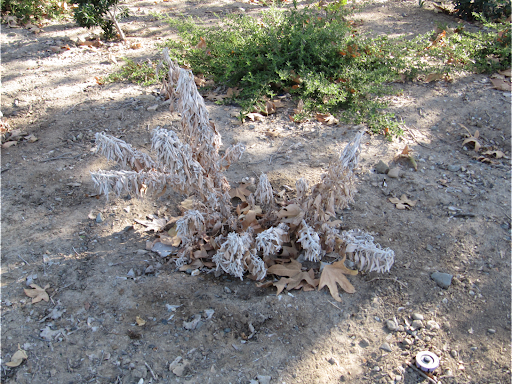
Pruning
No pruning necessary this month except corrective (dead or diseased branches) and finishing up on pinching or cutting new growing tips as needed. Shape by trimming the fast growing branches of plants like lemonade berry, California lilac (post bloom), Pacific Wax myrtle, or toyon.
Weeding
With the drought, weeds are fewer or not present. Remove them and discard them in the trash if they have flowers or seeds.
Mulching/Top Dress
“Leave well enough alone,” said my dad every time I wanted to mess up a good thing by meddling. By now, your garden has been making all the necessary adjustments for the onset of summer. Do not add some weird foreign organic mulch or compost layer to the soil surface with the approach of hot weather. See Refreshing Sprinkles in “Watering” above for tips on occasionally cooling the soil surface.
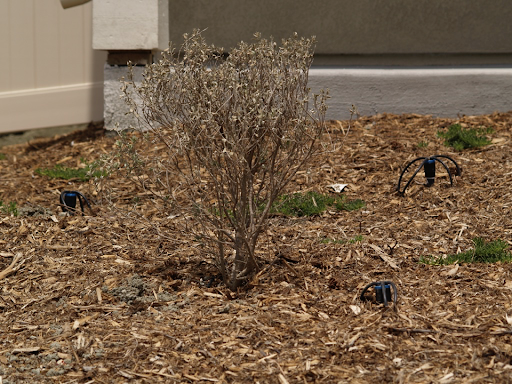
Feeding
Lay off the fertilizer as well. Natives want a rest during hot weather.
Troubleshooting – Varmints, Pests and Diseases
Signs and symptoms:
Early signs of root rot – dying branches, usually on a heavily mulched, over-watered plant.
Fungal diseases on leaves – curling leaves, white mildew, black spot, marginal burn, usually where humidity is high, often associated with mulch too thick, too close to plant, too fresh.
Insects (chewing mouthparts) or snails/slugs – holes or scalloped damage to leaves, grasshoppers and caterpillars leave frass, snails/slugs leave slime trails.
Insects (sucking mouthparts) – insects are visible, aphid, scale, mealybug.
Insects (galls) – especially manzanita leaf curl aphid, ceanothus stem moth gall.
Varmints, squirrels, rabbits, rats, mice, gophers, deer, etc.
Treatment for root rot:
- Avoid it. See “Related to Watering” above. Usually when a plant starts to succumb, it’s too late. Don’t pile thick organic mulch around the stems, aerate the soil. Prune off damaged plant parts, sanitize your tools. Water properly. Soils and roots need oxygen as well as water.
- Remove the dead plant and solarize the hole and soil around where it was for a couple weeks before planting anything new in the same spot.
Treatment for insects:
- Mechanical removal, blast them off with water.
- Mechanical elimination i.e.; prune gall damage off and discard in trash.
- Organic insecticides, safer soap, neem oil, etc.
- None, determine which is your ultimate goal, perfect leaves or balanced functional habitat. Chances are the leaf-chewing caterpillar got eaten by a bird or will mature into a pollinating butterfly.
Treatment for varmints
- Be creative. Elmer Fudd and Bugs Bunny come to mind.
- Live with them and pray for the success of resident hawks, owls, and coyotes.
- Realize the problem is mostly seasonal. Consider plant protection cylinders (wire mesh) to get you through the season.
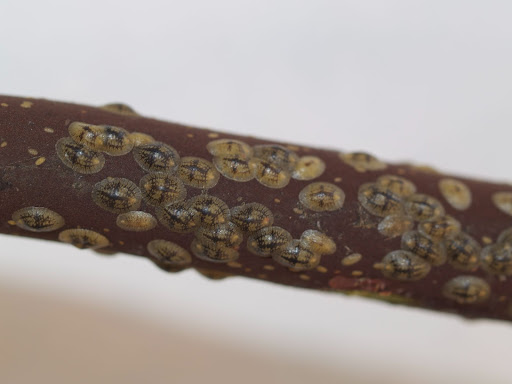
Annual Wildflowers
Start saving the seed from the wonderful show you had as a result of sowing seed last fall. Or start crumpling up the dried plants, creating a nice top dress and spreading seeds.
Adding New Plants
With summer on the horizon, you can plant in the shade, and plant warm season desert plants anywhere. On sites near the coast, you can plant sun and shade-loving plants. For extensive plantings inland or on hot, dry exposed sites, we’re moving into the season when it might be better to wait until fall.
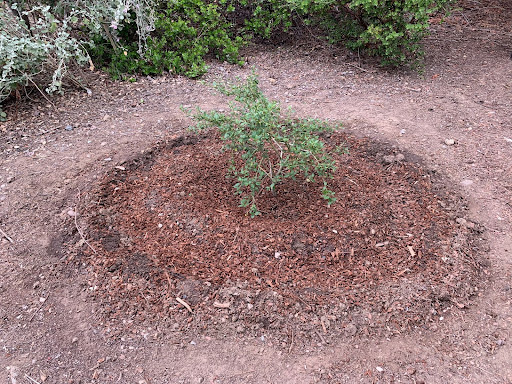
Phytophilia
This month, you can see an abundance of activity in and around each plant. Pollinators, birds, lizards, all manner of insects, amphibians (hopefully you have a water source), and other species including butterflies, hummingbirds, dragonflies and all their brethren seem to be everywhere all the time. Native plants form the foundational basis for all this wonderful enterprise. With so much going on, this quote from our hero, John Muir, speaks volumes: “When we try to pick out anything by itself, we find it hitched to everything else in the Universe.”
Important Review
Deep Soak and Refreshing Sprinkles help save water
Disease prevention – Summer
Minimal pruning
No mulching or feeding
Diagnosing problems
Gardening for balanced habitat values
Save seed
Plant sparingly, carefully
See the sum of the parts as one functional unit
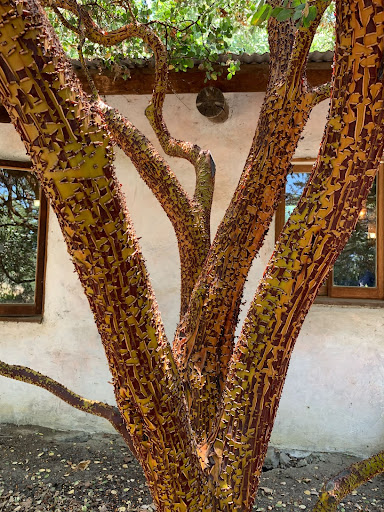
Engage
Long days and great weather calling us to be outside (stay hydrated). Anticipating the October planting season, we can use these summer months to gain inspiration, gather our thoughts, reflect on our values, search and really “see” nature, and record examples we would emulate in our garden designs come fall. Explore now, discover, share, and build stories for later. Studying native plants and creating natural gardens is a fascinating business, and one never tires of the endeavor.
Our garden designer Randi Gunder described garden themes, or special sections within a garden, or even individual specimen plants as “postcards from everywhere you’ve ever been.” I like that. But in order to send a postcard, you have to go someplace. Maybe you can visit a mountain stream this summer and then plant a red-twig dogwood this fall. Perhaps a hike on a coastal bluff will inspire a unique combination of low growing buckwheat, coastal four o’clock, cliff spurge, golden yarrow, dudleyas and a couple cool rocks. Let’s go get some postcards.
Hey, it’s a great year! We’re still making it!
From the JUNE Natural Garden,
Mike Evans

Questions? Help is just one call or one email away. Call (949) 728-0685 or email (with pictures if you like) our special helpline: gardenhelp@californianativeplants.com